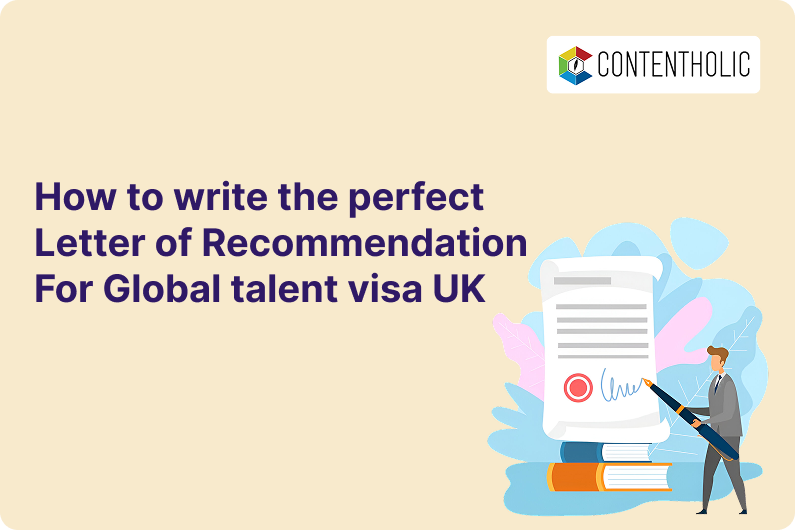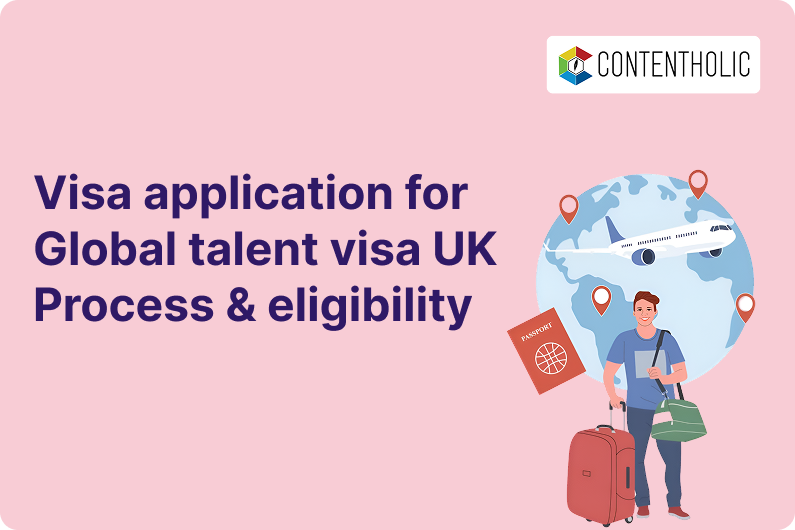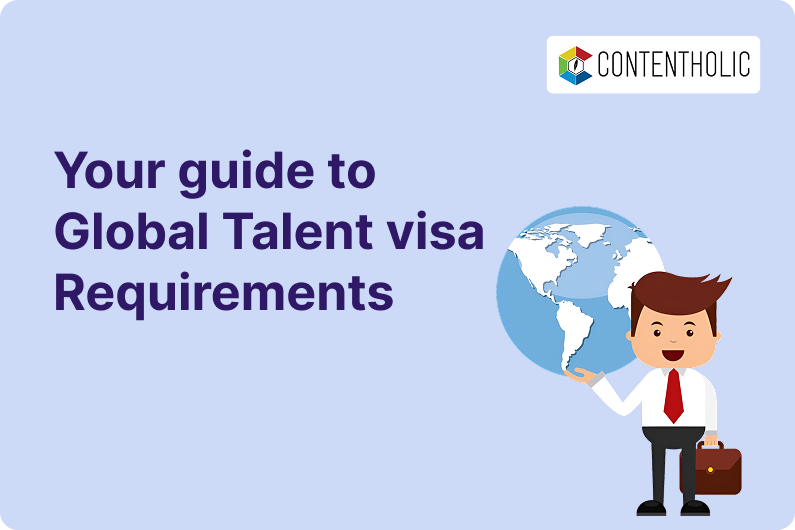Writing an effective Student Visa SOP is like fixing the missing pieces in a puzzle. It plays an integral role in fulfilling your dream to pursue higher studies abroad. It is essential to write it based on your understanding and thought process. Using ChatGPT/AI to use it won’t serve the purpose as it will not give any sort of a human touch to your Student Visa SOP, it would rather sound very mechanical. When it comes to writing a Student Visa SOP, we need to understand first what a SOP is all about. A Statement of Purpose (SOP) is a written document that provides insight into who you are, your reasons for choosing a particular course at a university abroad, and how it will you fulfill your career goals.
You should know that wanting to save time and not wanting to put in much effort to write your SOP for getting a Student Visa on your own, takes you away from your dream of studying abroad. Eventually, the Visa officials are smart enough to detect whether your SOP is manually written or AI-generated. The rise in the use of AI in writing Student Visa SOPs has made them efficient at using tools and technologies to check whether AI has been used or not. You can always seek help from professional SOP writers working with Contentholic. This blog aims to provide an understanding of writing a Student Visa SOP appropriately without taking the help of ChatGPT/AI.
Structuring of a Student Visa SOP without using AI
When it comes to a Student Visa SOP, there are certain parameters based on which the Visa officials, want you to write your Student Visa SOP. While there may be some minor differences about what a specific country wants you to mention in your Student Visa SOP, some of the common requirements are:
Introduction- A great start captures a reader’s attention. You can begin your SOP, by writing a quote related to your choice of study. Then go on to write the course and the university, you have been admitted to and from when your course will be commencing from. Writing this in your own words makes more of an impact rather than using ChatGPT to write it, as it may give an inappropriate or irrelevant start to your Student Visa SOP.
Academic History- When it comes to writing down your educational details, you have to talk about your performance at the school and college levels. Not just about your academic prowess but also about your contributions and achievements in extra-curricular activities. Write as to what your educational experience has been like so far and how it made you choose a particular course. Writing this manually will give it a personalized touch, whereas AI is most likely to present this information incoherently.
Professional Experiences- In this section, you get to talk about your professional life and skills. Highlight your position and the duties and set of responsibilities you had while working in an organization. Also, write about any awards, promotions, or accolades you earned. Write in a way that showcases how your work experience made you want to upskill for which you decided to pursue higher education in a specific field. Now when you write this in your own words, your perspective comes into the picture as you can join the dots when it comes to describing your work life, whereas AI will blatantly mention statements that might be wrong or may be exaggerated.
Interest in a Course- What inclined you towards your choice of study? Write about how you intend to prepare yourself for this particular course. What motivates you to venture into this field? Mention the curriculum, relevance, and demand for your course. Write as to how studying this program will help you land a better career opportunity. When such information is written manually, it seems to be more in sink with what your academic and professional life has been so far. AI, on the other hand, might just state random facts about a course that is not necessary.
Selection of a University- Give details as to how studying a specific program from a university will provide you with an edge and better job prospects. Go on to write about the university, its ranking, special features, faculty, activities, industry ties, and diverse student diaspora. When you write in your own words, you are more likely to be careful about only mentioning relevant and up-to-date information about your university, whereas AI tools like ChatGPT may randomly present these details.
Studying in a particular country- Over here, you need to express your viewpoint about how studying in a specific country is best suited for your choice of course. What are the factors that made you choose a specific country? Is it infrastructure, research facilities, teaching patterns, or the student-teacher diaspora? Your interest in studying abroad is something that you will be able to express more appropriately, while AI might just state random facts about the country that may not state your reasons for studying there.
Intent to return to your native country- Stating your intention to return to your home country after your studies are completed abroad, is a very important detail. This lets the Visa authorities know that you do not intend to overstay abroad. In this section, you can talk about how completing your studies in a foreign land, will give you a competitive edge over the other candidates and will help you strive in your professional career. When you write it in your own words, you are more likely to emphasize your bond with your family and why your presence is necessary back home, whereas if you use AI, it is more likely not to state any reasons.
Future Plans- How your journey so far will help you in achieving your future goals? What is it that you plan on doing after completing your studies abroad? Now, this is something very personal that you have an idea about, not AI. It might just omit this very crucial detail, which will make your Student Visa SOP incomplete.
Financial Support- The Immigration authorities take a keen interest in knowing how a student is most likely to carry out their expenses of studying abroad. In this part, write about the source of your finances, whether is it through sponsorship, educational loans, grants or a scholarship, or your savings. Mention the exact amount so that no discrepancies are detected. Now, this is something that you are most likely to write properly whereas AI might just mix up or provide incorrect details about your financial situation.
Concluding Statement- Towards the end of your Student Visa SOP, you need to reiterate your intent of pursuing a particular course from a university abroad and how it will be beneficial for your career. Providing an apt ending in your own words is more suitable as you have a deep understanding of what you have written so far in your SOP, whereas AI tools like ChatGPT might just come up with a very abrupt ending.
Useful Tips for Writing an Effective Student Visa SOP
While you can make use of the advice or suggestions you will get if you decide to contact professional SOP writers for your Student Visa SOP, we have also mentioned some useful tips for writing an effective SOP, without taking the help of AI tools.
Customization- You need to write your SOP in a way that is curated as per your skills and interests and how it is related to your choice of course. So, for this, you need to be able to give your Student Visa SOP, more of a personal touch by reflecting upon your journey so far and how that motivates you to study further.
Using a formal yet conversational tone- The key to writing an effective Student visa SOP, is to maintain a continuous flow of information. You should present your thoughts and ideas in a way that proves your worth for being admitted to a course at a university abroad. You need to be formal and courteous and not sound disrespectful.
Show, don’t tell- A Student Visa SOP requires you to provide a proper context about the things that you talk about. You shouldn’t just merely write statements, but provide sufficient explanations. There might be other applicants applying for the same program that you are, but their reasons might be different. This is where your unique perspective comes into the picture, so make the most out of it.
Compelling Storyline- A Student Visa SOP is most likely to cast an impression on Immigration officials, only when you manage to keep them engaged in reading about you. To keep them interested, you need to write in a manner that provides an in-depth understanding of your eagerness to pursue higher studies in a foreign land.
Bringing out the Best- Treat your Student Visa SOP as a channel for raising your inner voice. When it comes to leaving a good impression on the Visa authorities, you need to write about your best qualities, strengths, and achievements, that show you are a deserving candidate.
Precautions to Take while Writing a Student Visa SOP
Now, that we have seen how to write an SOP using the above-mentioned tips, let us have a look at some of the precautions we should follow while writing a Student Visa SOP.
Adhering to the Guidelines- Ensure that the information you write in your Student Visa SOP is as per the parameters set by the Visa officials, and not something beyond it. Write in a way, in which you can provide proper explanations for the questions asked by the Immigration authorities of a particular country. Keep in mind that what you write is within the prescribed word limit for a Student Visa SOP, which is usually 800-1500 words.
Devoting a Good Amount of Time- Once you receive your acceptance letter from a university, take time to write your Student Visa SOP. Starting early is always beneficial as you get ample time to state your viewpoint in an SOP appropriately, without being in a hurry to finish writing it.
Being specific- Remember, a SOP is not a thesis. A student visa SOP should be written in a manner that is to the point and makes it easier for the reader to know your interest in pursuing higher studies. So, instead of beating around the bush, be very accurate and precise with the information you provide.
Credibility- While trying to cast an impression on the Immigration authorities, don’t end up mentioning things that may be incorrect or blatant lies. You have to be honest with what you write about yourself and refrain from copying from any other SOP or using AI tools like ChatGPT to write your Student Visa SOP. The Visa officials are quite efficient enough to find out whether an SOP is written manually or is AI-generated.
No Proofreading or Editing- Once you have written your Student Visa SOP, give it a proper reading and look for any grammatical mistakes or in case any other important information that needs to be added or improved upon. You can ask a friend, family member, colleague, or mentor to proofread your SOP. What’s even better is when you get your SOP reviewed by study abroad consultants having a team of professional SOP writers who will give you constructive feedback.
Conclusion
Treat your SOP like a means to an end. A Student Visa SOP is your chance to portray the best picture of yourself. So, give it your best shot. Do proper research about your interest in a specific course at a university abroad and how it will impact your future. Give it the time and effort it needs. After all, it forms an essential part of your dream to pursue higher studies. Using ChatGPT/AI might seem very convenient, but it is most likely to cause you more harm than good.
If you feel you can outsmart the Immigration authorities, then you are wrong. The rise in the number of students blindly copying SOPs from the internet or using AI has made the process of getting a student visa stricter. The Visa officials have turned out to be quite efficient in finding out whether a Student Visa SOP is human-written or AI-generated, by using the latest AI detection tools and technologies.
Writing your SOP for availing a Student Visa in your own words should be your top-most priority. However, if you feel that you may lack the necessary writing skills for writing a Student Visa SOP, then you must seek professional help. Numerous agencies specialize in SOP writing services such as Contentholic. We have a team of the best SOP writers who will analyze your profile before writing down your SOP, and we will also proofread and review it. So, the next time you need any clarification regarding the writing of an SOP, do reach out to us.






